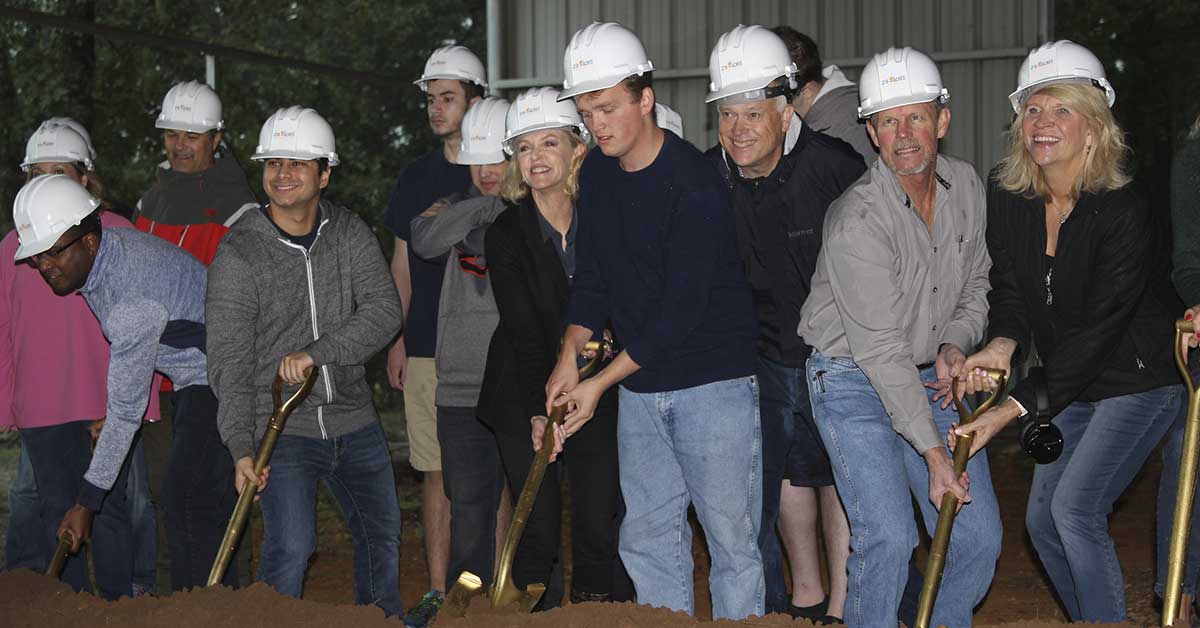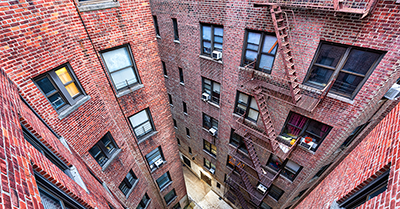 Future residents and their family break ground.
Future residents and their family break ground.Autistic Home Buyers Are An Emerging Force In Today’s Market
Whenever there has been a shift in the demographics of our population, new housing needs have emerged. The example most of us are familiar with is when the return of soldiers from WWII created a demand for housing to accommodate their newly growing families. Today, a new, and often overlooked, demographic is poised to influence the way we build, customize and market our homes.
There are currently 1.5 million individuals that have been diagnosed with autism spectrum disorders (or ASDs) in the United States, 80% of them under the age of 22. OPENING DOORS: A Discussion Of Residential Options For Adults Living With Autism And Related Disorders from the Southwest Autism Research & Resource Center (SARRC) shares that this is a rising trend as well. “In the 1980s, the incidence of autism was 1 in 10,000 children. Throughout the 1990s, the rate steadily climbed and reached 1 in 500.”
Because autism is a heterogenous diagnosis it’s hard to pinpoint what percentage of autistic children and adolescents will seek out independent living and homeownership when they become adults. However, the Autistic Housing Network can tell us that there are presently 496,000 autistic adults that do not live at home with their family. Given the consistently rising population, it’s safe to say that the demand for homes that will appeal to the unique needs of autistic adults is growing.
The Autism Housing Network article, “Designing Living Spaces for Autism on a Budget” cautions that there is no “one-size-fits-all approach” to creating or purchasing a space for people on the autism spectrum. Yet, there are some requirements that REALTORS® and designers working with autistic clients have found to be increasingly common.
- Clearly defined living spaces that have seperate rooms for separate functions. A home with one area for sleep, another for recreation, and so on is often requested. Open floor plans or studio type dwellings don’t offer the division of purpose that many autistic adults require in order to create a consistent living routine.
- A space that supports their specific interests and hobbies. Reddit user and autistic homeowner Jimmyhand90 shared that he “bought on floor plan and suitability for needs.” It was important to him that the garden was large enough, and “shaped right to build an enclosure for my cats.”
- A predictable layout. The SAARC report found that eclectic home layouts don’t provide the “spatial sequencing, smooth transitions between rooms and uses, and the potential to establish routines” that help autistic homeowners minimize stress.
The increasing need for autistic friendly homes is generating some creative housing solutions as well. The Madison House Autism Foundation is encouraging prospective, autistic home buyers to look into the tiny home trend. They believe the adaptivity and low cost of these structures make them a great choice.
A group of families in North Texas purchased 29 acres of land in 2015 in order to build a housing development exclusively for adults with ASD. The homes and surrounding property were built specifically to support the safety, independance and needs of ASD adults. The housing development will be fully open in the spring of 2020 and will cater to needs across the spectrum.
One of the services 29 Acres will provide is access to their Transition Academy, a 2 year program that teaches residents to feel confident during daily activities like paying bills, grocery shopping and home care – providing ASD adults with a stepping stone towards independent homeownership.
Time to Focus on Affordable Housing
Taxes on real estate are not the answer. Sign the petition calling on Congress to address our country’s housing shortage.





